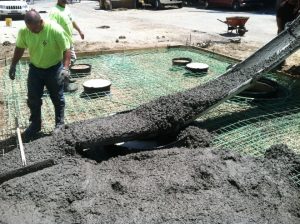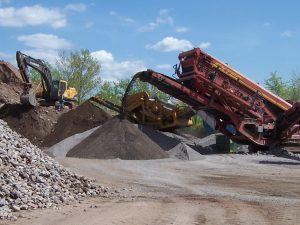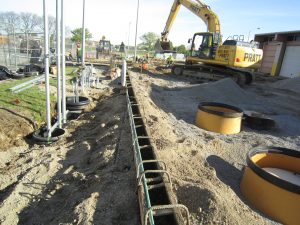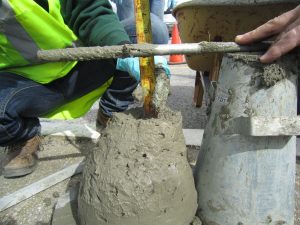Guide to Proper Concrete Installation
Avoid Cold-Weather Pours
With the onset of springtime and warmer weather comes a dramatic increase in outdoor construction work. Concrete work is widespread in the construction world, whether concrete is used as a platform for equipment, a pedestrian walkway, road curbing, to encase a buried pipe, or any other purpose. Warm temperatures are ideal for pouring concrete, since below-freezing temperatures during curing may damage concrete if special precautions are not followed. When pouring concrete, good practices, like avoiding concrete work on a freezing day, prevent cracking and honeycombing.
Follow the Concrete Standards
In this blog, we will discuss good concreting practices. The American Concrete Institute (ACI) and ASTM International are the two worldwide leaders when it comes to setting standards for concrete work, and their standards are the basis for the vast majority of jobsite practices.
Items of highest importance when planning and executing a concrete job are:
Selecting and confirming the proper cure strength
Concrete mixtures are designed to reach a specific compression strength upon curing. Depending on the material ratio (air, water, cement, admixtures), a mixture’s strength can be altered. Not only is it important to specify the type of mix you want, but care must be taken to confirm that you ultimately receive the correct product. It is crucial to obtain all copies of material tickets and receipts to properly document your work.
Selecting and constructing appropriate formwork
Formwork is placed around the perimeter of the selected area, and directly dictates the shape and extent of all concrete work. Forms are typically  constructed of plywood and must be free from ridges or other defects to ensure an even, consistent pour. They must be able to be removed once concrete is given adequate time to set without damaging its intended shape. To discourage adherence, it is good practice to cover forms in oil or soak them in cold water before use. Lastly, future work must be considered when building formwork; the Contractor may need to provide sleeves or other openings for installation of piping or conduit at a later date.
constructed of plywood and must be free from ridges or other defects to ensure an even, consistent pour. They must be able to be removed once concrete is given adequate time to set without damaging its intended shape. To discourage adherence, it is good practice to cover forms in oil or soak them in cold water before use. Lastly, future work must be considered when building formwork; the Contractor may need to provide sleeves or other openings for installation of piping or conduit at a later date.
Performing an onsite slump test
An important QA/QC step when overseeing concrete work is the slump test,  which ensures that concrete has the proper water content. A representative sample of concrete is placed into a steel cone, which is situated on a flat, impermeable surface. The steel cone is filled to the very top, with the concrete being rodded thoroughly to ensure compaction. The cone is then removed, leaving the free-standing concrete behind. The difference in height between the cone and the free-standing concrete is referred to as the “slump”. A typical, healthy slump is 3 to 4 inches. Anything less or greater than this range indicates that the mixture has too little or too much water, respectively.
which ensures that concrete has the proper water content. A representative sample of concrete is placed into a steel cone, which is situated on a flat, impermeable surface. The steel cone is filled to the very top, with the concrete being rodded thoroughly to ensure compaction. The cone is then removed, leaving the free-standing concrete behind. The difference in height between the cone and the free-standing concrete is referred to as the “slump”. A typical, healthy slump is 3 to 4 inches. Anything less or greater than this range indicates that the mixture has too little or too much water, respectively.
Ask the Engineers
Walden has a team of professional engineers with experience in designing concrete pads for various applications ranging from light-duty (pedestrian use) to heavy-duty (commercial truck traffic) and know the concrete good practices. Check out our services for more information. Please give us a call today at (516) 624-7200 to discuss your next project!
